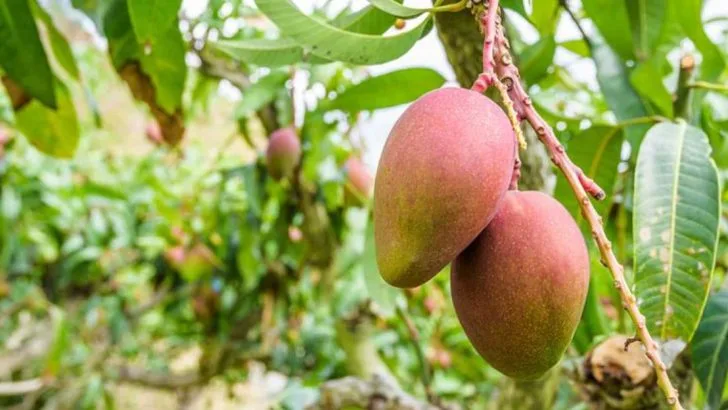Growing mango trees in containers is a great way to enjoy fresh mangoes even if you don’t have a large yard or live in a cooler climate. With the right care, these trees can thrive in pots, producing delicious fruit while adding a tropical touch to your outdoor space.
To maximize growth and fruit production, start by choosing the right container that allows the roots to spread comfortably. Opt for a well-draining soil mix to prevent waterlogging, which can harm the tree. Mango trees need plenty of sunlight, so make sure they get at least 8 hours of direct light daily. Also, regular pruning and fertilizing will help your tree grow strong and healthy.
By following these 16 best practices, you’ll be on your way to cultivating a thriving mango tree in a container that will reward you with sweet, juicy fruit for years to come.
Choose the Right Container
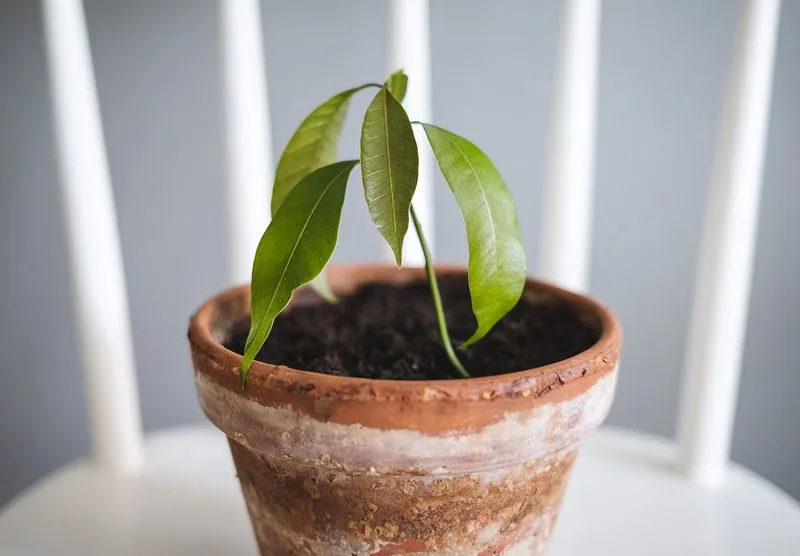
The success of mango trees in containers begins with selecting the appropriate pot. Opt for a large, sturdy container that accommodates root growth, ideally with a capacity of 20 gallons or more. Ensure the pot has ample drainage holes to prevent waterlogging, which can be detrimental to mango trees. Place the container in a location that receives abundant sunlight, as these tropical trees thrive in warm, bright conditions. Prioritizing the right pot not only provides stability but also influences the overall health and growth potential, paving the way for a bountiful harvest.
Use Quality Potting Mix
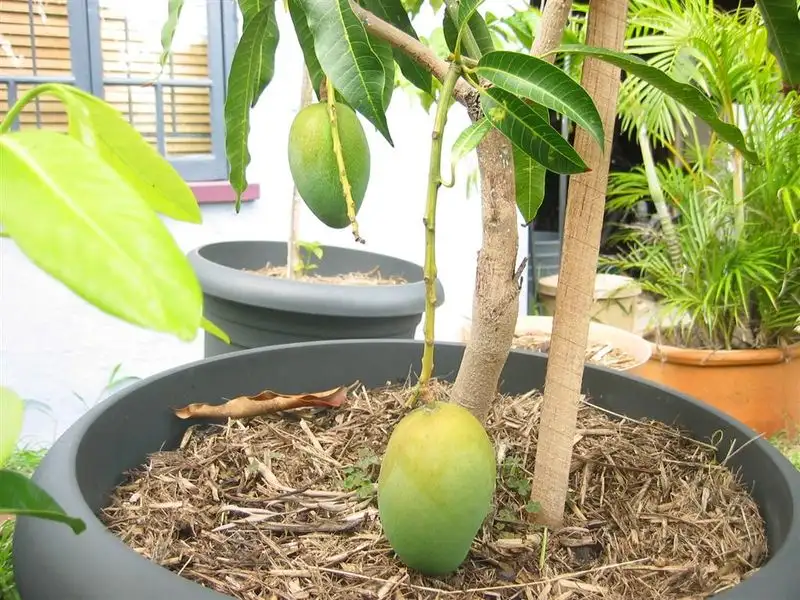
Choosing the right soil for your mango tree is crucial. A high-quality potting mix rich in organic matter provides the necessary nutrients for growth. Ensure the mix is well-draining; waterlogged soil can lead to root rot. Incorporating perlite or sand can enhance drainage, offering a balanced environment. Refrain from using garden soil, which can compact in containers. These considerations create an ideal foundation, promoting healthy root systems and vibrant foliage. By investing in premium potting mix, you set the stage for robust mango tree development.
Provide Adequate Sunlight
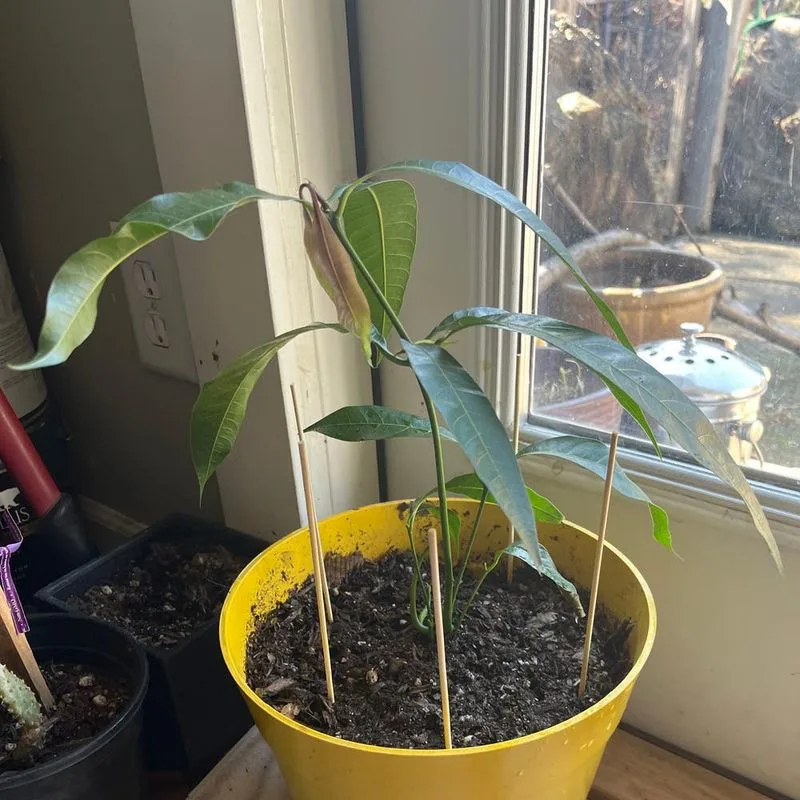
Sunlight plays a vital role in the thriving of mango trees. Position your container where it can soak up at least six to eight hours of direct sunlight daily. This exposure is necessary for photosynthesis, enabling the tree to produce the energy it needs for growth and fruiting. If indoors, consider supplementing with grow lights to mimic natural sunlight. Remember, insufficient sunlight can lead to weak growth and poor fruit production. Therefore, ensuring your tree receives ample light is essential for its vitality and productivity.
Water Wisely
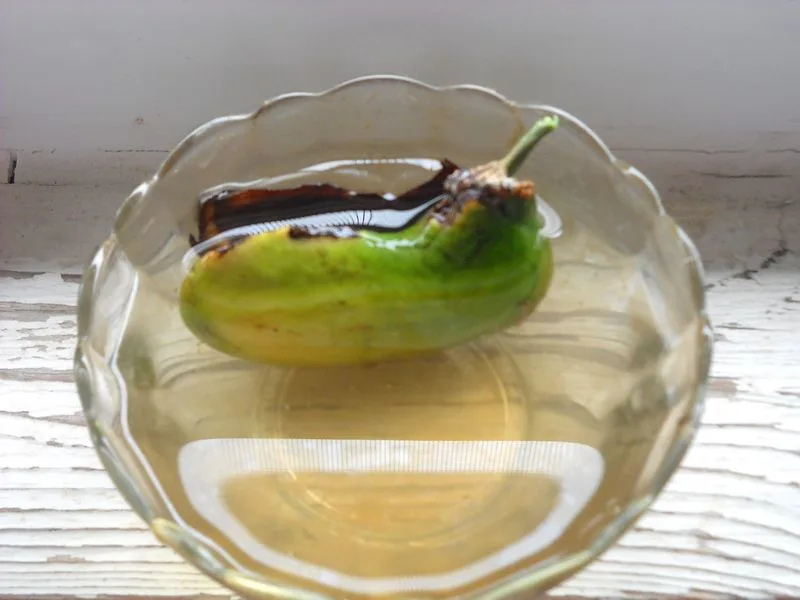
Watering is a balancing act for container mango trees. It’s important to keep the soil consistently moist but not soggy. Allow the top inch of soil to dry out between waterings to prevent root rot. Adjust your watering frequency based on weather conditions; hotter climates may require more frequent watering. Use a moisture meter to monitor soil moisture levels accurately. By mastering this balance, you can promote healthy growth and avoid common pitfalls associated with over or under-watering. This approach helps in maintaining a robust and thriving mango tree.
Fertilize Regularly
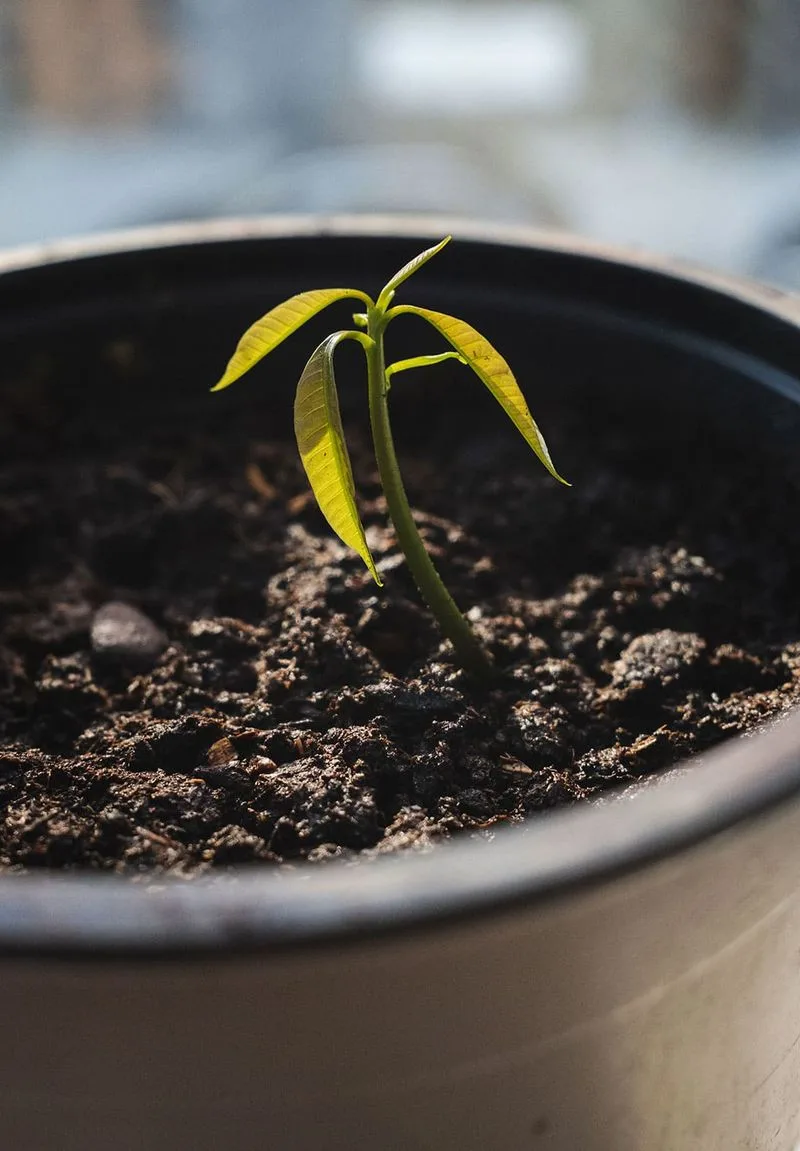
Regular fertilization supports mango tree growth in containers. Use a slow-release fertilizer with balanced nutrients to feed your tree throughout the growing season. Choose formulations specifically for fruit trees, which provide essential nutrients like nitrogen, phosphorus, and potassium. Apply fertilizer according to package instructions, usually every few months. This consistent feeding regimen ensures your mango tree has the nutrients it needs for strong growth and fruit production. By nurturing your tree with the right fertilizers, you encourage a healthy, productive plant ready to bear delicious fruit.
Prune for Shape and Health

Regular pruning keeps your mango tree healthy and well-shaped. Prune to remove dead or diseased branches, promoting air circulation and sunlight penetration. This practice helps prevent pest infestations and diseases. Focus on shaping the tree to encourage an open canopy, enabling better light access to all parts of the tree. Pruning also redirects energy to fruit production rather than excessive foliage growth. Timing is crucial; prune during the dormant season to minimize stress. Thoughtful pruning contributes to a healthier, more productive mango tree with an aesthetically pleasing form.
Monitor for Pests and Diseases

Vigilance in monitoring for pests and diseases is crucial for the well-being of mango trees in containers. Regularly inspect leaves and stems for any signs of infestation or disease, such as discoloration or holes. Early detection allows for swift intervention, whether through natural remedies or appropriate pesticides. Employ preventive measures, like ensuring good air circulation and maintaining cleanliness around the container. By staying alert to potential threats, you can protect your mango tree from damage, ensuring its health and vitality over time.
Repot as Needed

Repotting is an essential practice for container-grown mango trees. As the tree matures, its roots will outgrow the initial container, necessitating a larger pot. Signs that repotting is needed include roots protruding from drainage holes or the tree becoming root-bound. Choose a pot one size larger with fresh potting mix to accommodate growth. Repotting should ideally occur during the tree’s dormant period to reduce stress. By providing ample space and fresh soil, you support the mango tree’s ongoing development and fruit-bearing potential.
Support Young Trees
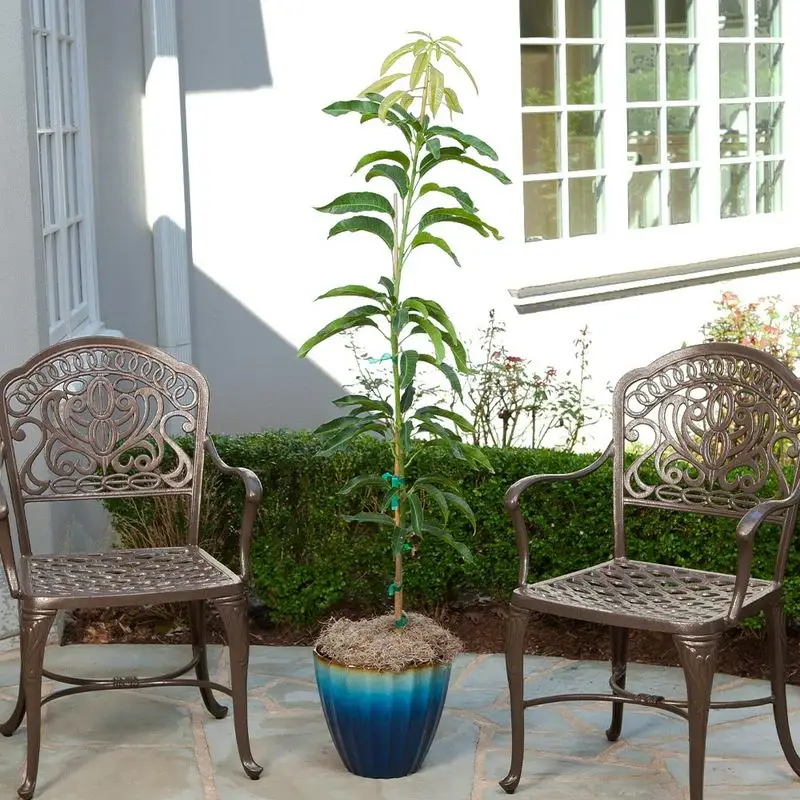
Supporting young mango trees helps them grow straight and strong. Use stakes or ties to guide the tree’s growth, especially in windy areas. Ensure ties are not too tight, allowing for natural movement and growth. This support prevents leaning and encourages a robust trunk. As the tree matures, gradually remove supports to let it stand independently. Providing early support sets the foundation for a healthy structure, minimizing future issues. A well-supported young mango tree is more likely to thrive and produce abundant fruit in the long term.
Ensure Proper Air Circulation
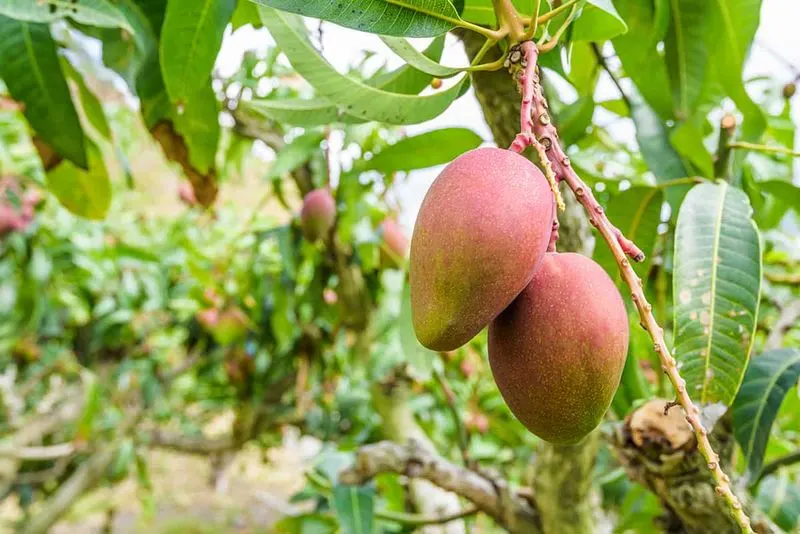
Air circulation is vital for maintaining a healthy mango tree. Ensure your container tree isn’t overcrowded by other plants, which can hinder airflow. Good circulation helps reduce humidity around the foliage, minimizing the risk of fungal diseases. Arrange containers with adequate space between them and prune branches that may obstruct airflow. By fostering an environment with proper air movement, you not only prevent disease but also support the tree’s overall health and vigor, creating conditions conducive to fruit production.
Mulch to Retain Moisture
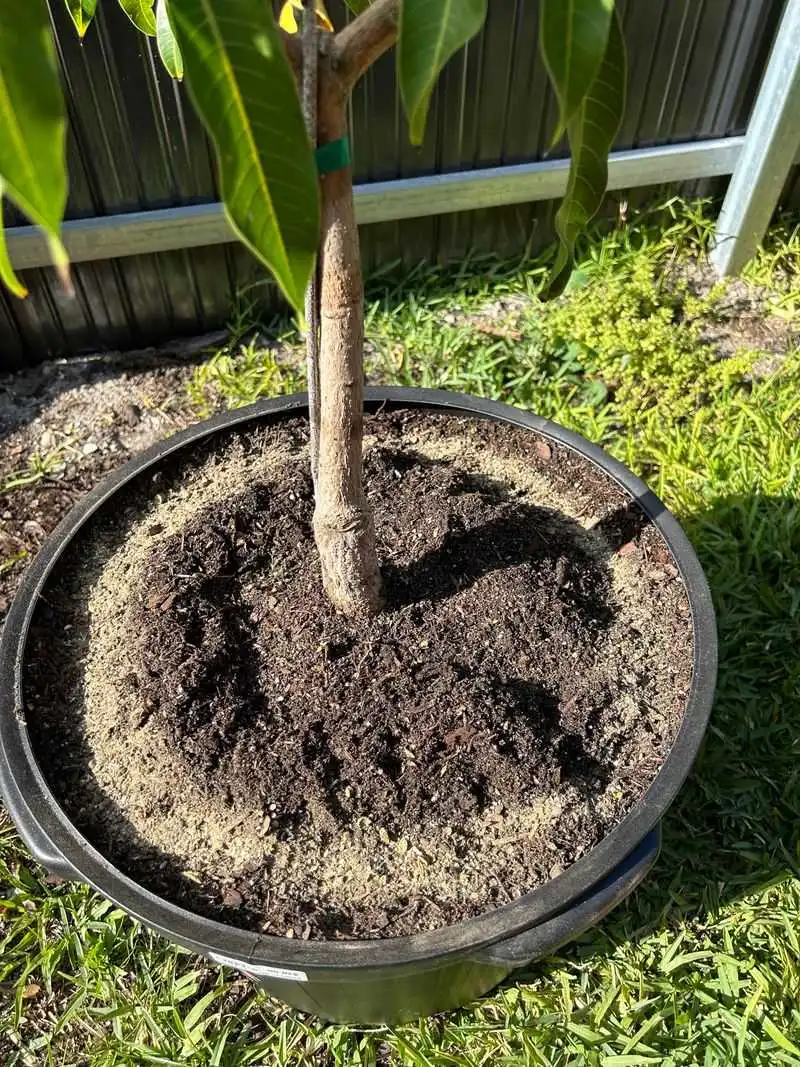
Mulching is an effective practice to conserve soil moisture for container mango trees. Apply a layer of organic mulch, such as bark or wood chips, around the base of the tree. This helps retain moisture and regulates soil temperature. Mulch also suppresses weed growth, reducing competition for nutrients. Ensure the mulch doesn’t touch the trunk to prevent rot. By maintaining consistent moisture levels and minimizing temperature fluctuations, mulching contributes to a stable environment, promoting healthy growth and fruit production.
Adjust for Seasonal Changes
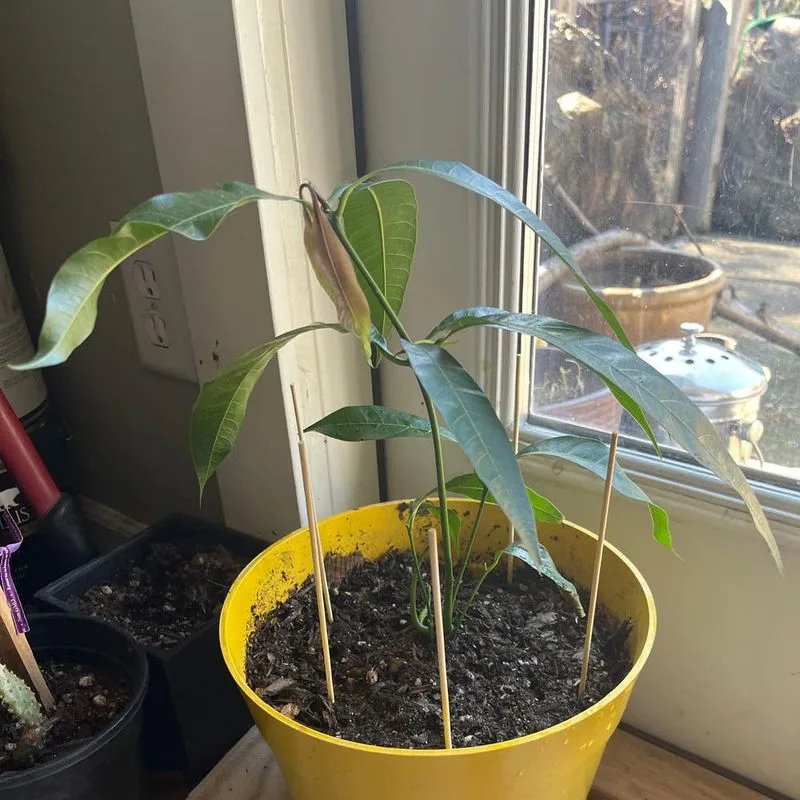
Container mango trees require adjustments to thrive through seasonal changes. During colder months, move the tree indoors or to a sheltered location to protect it from frost. In the growing season, ensure it receives maximum sunlight and warmth. Adjust watering and fertilization schedules based on the tree’s active or dormant phases. These adjustments help the tree adapt to varying conditions, maintaining its health year-round. By being attentive to seasonal needs, you support the tree’s resilience and productivity, ensuring it continues to thrive.
Train the Tree for Maximum Yield
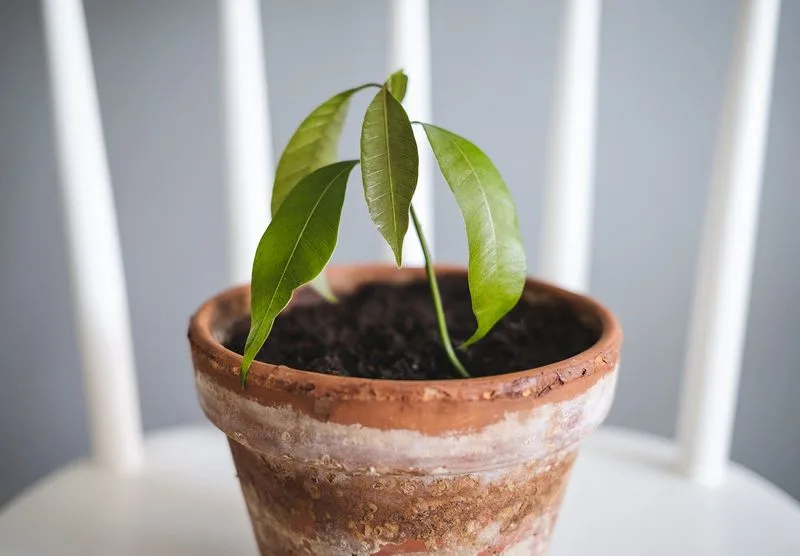
Training techniques can enhance the yield of container mango trees. Espalier is one method that involves training branches along a framework to maximize sunlight exposure. This ensures even fruiting and better air circulation. Regular shaping, combined with strategic pruning, directs the tree’s energy into fruit production. These practices allow for a controlled growth pattern, optimizing space and resources. By training your mango tree, you not only increase its productivity but also maintain an attractive, manageable form. Such techniques are integral for maximizing the rewards of container gardening.
Use Companion Planting
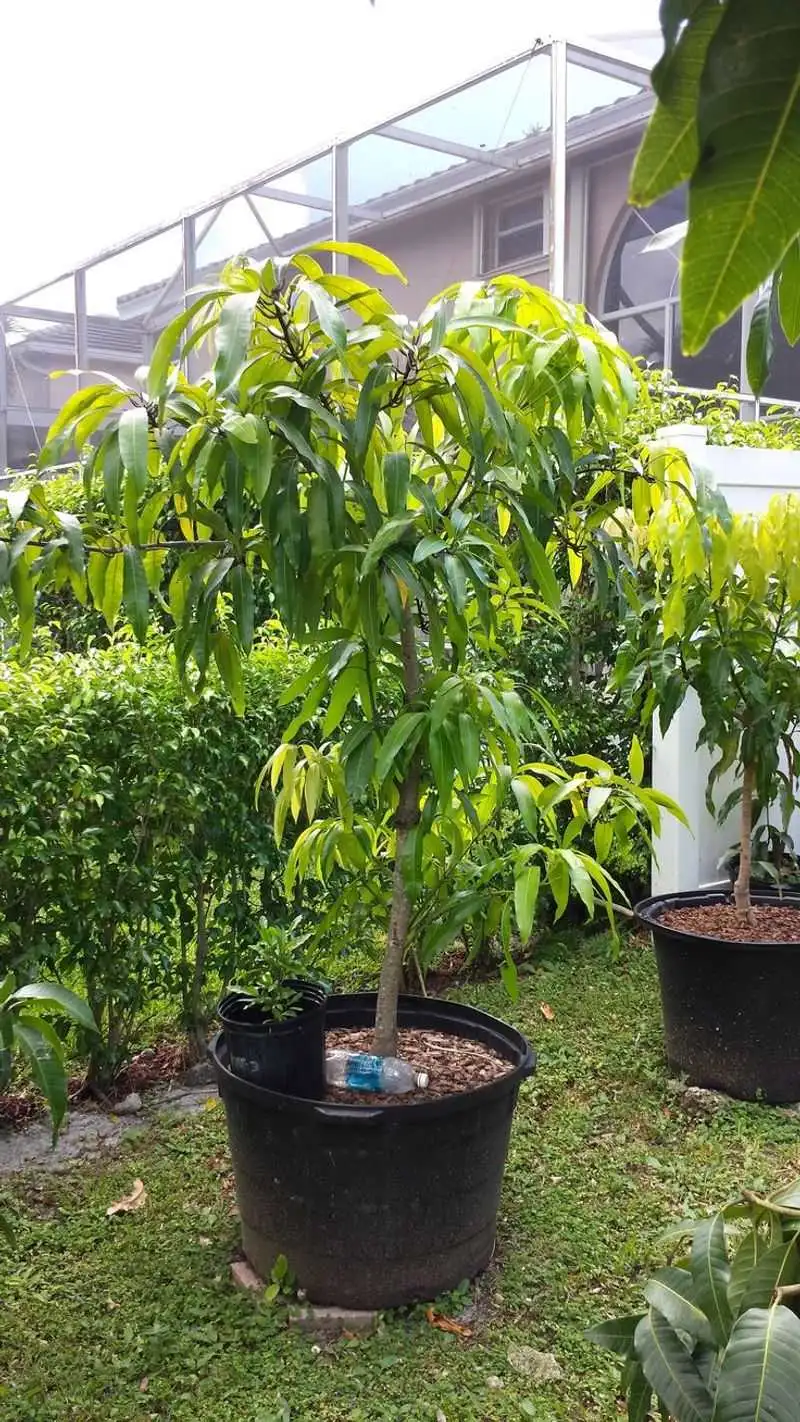
Companion planting leverages natural synergies between plants to benefit your mango tree. Grow basil or marigold nearby to deter pests and enhance growth. These companions attract beneficial insects, promote biodiversity, and improve soil health. Ensure companions don’t compete for resources by maintaining appropriate spacing. This strategy fosters a balanced ecosystem, reducing the reliance on chemical interventions. By integrating companion plants, you cultivate a thriving environment that supports your mango tree’s health and productivity, making container gardening more sustainable and rewarding.
Know When to Harvest

Timing the harvest is crucial for enjoying the best flavor from your mango tree. Look for visual cues, such as a color change from green to yellow or red, and a sweet aroma indicating ripeness. Gently squeeze the fruit; it should yield slightly without being too soft. Harvest with care, cutting the stem to avoid damaging the tree. Proper timing ensures the fruit has developed its full flavor and sweetness. By observing these signs, you can enjoy mangoes at their peak, making the wait for your container-grown harvest worthwhile.
Protect from Extreme Weather
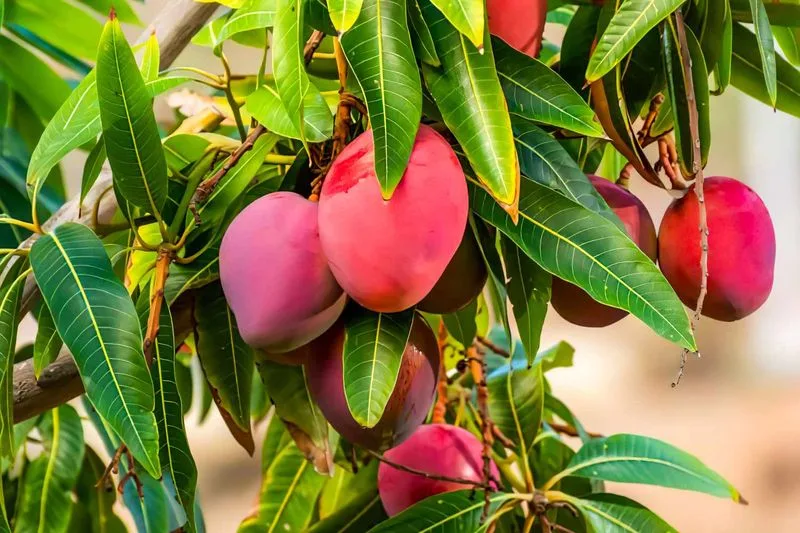
Extreme weather can pose challenges for container mango trees. Protect them by moving the pots to a sheltered location during storms or frost. Use protective coverings like frost cloths to shield against sudden temperature drops. In hot weather, provide shade to prevent leaf scorch. These protective measures ensure your tree remains healthy despite adverse conditions. By safeguarding against weather extremes, you maintain the tree’s vitality and productivity, ensuring it continues to flourish and produce fruit season after season.

